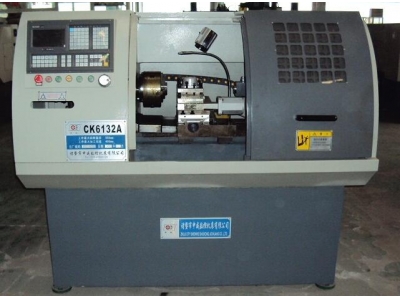一、數(shù)控編程電腦主機(jī)啟動(dòng)鍵
數(shù)控編程電腦主機(jī)啟動(dòng)鍵的作用與原理
數(shù)控編程是一種現(xiàn)代化的加工技術(shù),廣泛應(yīng)用于各種機(jī)械加工行業(yè)中,其核心部分就是數(shù)控編程電腦主機(jī)。在進(jìn)行數(shù)控編程加工時(shí),啟動(dòng)鍵是非常重要的控制元件之一。本文將深入探討數(shù)控編程電腦主機(jī)啟動(dòng)鍵的作用與原理。
數(shù)控編程電腦主機(jī)啟動(dòng)鍵的作用
啟動(dòng)鍵是數(shù)控編程電腦主機(jī)的主要控制按鈕之一,其作用非常關(guān)鍵。通過(guò)啟動(dòng)鍵,操作人員可以啟動(dòng)數(shù)控編程系統(tǒng),使其進(jìn)入工作狀態(tài)。在加工過(guò)程中,啟動(dòng)鍵還可以控制機(jī)床的運(yùn)轉(zhuǎn),實(shí)現(xiàn)加工程序的執(zhí)行和監(jiān)控。因此,啟動(dòng)鍵直接影響到數(shù)控加工的順利進(jìn)行以及加工質(zhì)量的穩(wěn)定性。
啟動(dòng)鍵的設(shè)計(jì)通常經(jīng)過(guò)精心考慮,旨在確保操作的便捷性和安全性。在使用啟動(dòng)鍵時(shí),操作人員只需按下按鈕即可啟動(dòng)數(shù)控編程系統(tǒng),無(wú)需復(fù)雜的操作步驟,降低了操作的難度并提高了工作效率。同時(shí),啟動(dòng)鍵還配備有安全保護(hù)裝置,確保在意外情況下能夠及時(shí)停止機(jī)床運(yùn)轉(zhuǎn),保障操作人員的安全。
數(shù)控編程電腦主機(jī)啟動(dòng)鍵的原理
數(shù)控編程電腦主機(jī)啟動(dòng)鍵的工作原理基于電氣控制系統(tǒng)。當(dāng)操作人員按下啟動(dòng)鍵時(shí),啟動(dòng)鍵會(huì)發(fā)送信號(hào)至電氣控制系統(tǒng),觸發(fā)系統(tǒng)內(nèi)部的開(kāi)關(guān)和繼電器,從而完成電路的閉合和機(jī)床的啟動(dòng)。啟動(dòng)鍵的按下其實(shí)是一個(gè)電氣信號(hào)的傳遞過(guò)程,通過(guò)這個(gè)過(guò)程實(shí)現(xiàn)了數(shù)控編程系統(tǒng)的啟動(dòng)。
啟動(dòng)鍵的原理設(shè)計(jì)旨在簡(jiǎn)化操作步驟的同時(shí)確保系統(tǒng)的穩(wěn)定性和安全性。在設(shè)計(jì)時(shí),啟動(dòng)鍵通常與其他控制元件相互配合,形成完整的控制系統(tǒng)。通過(guò)合理的設(shè)計(jì)和布局,啟動(dòng)鍵可以準(zhǔn)確地控制機(jī)床的啟停,并且與加工程序?qū)崿F(xiàn)無(wú)縫銜接,保障加工的準(zhǔn)確性和質(zhì)量。
總結(jié)
數(shù)控編程電腦主機(jī)啟動(dòng)鍵作為數(shù)控編程系統(tǒng)的關(guān)鍵控制元件,承擔(dān)著啟動(dòng)、停止、監(jiān)控等重要功能。其作用和原理的理解對(duì)于操作人員和維護(hù)人員都至關(guān)重要,只有深入掌握數(shù)控編程電腦主機(jī)啟動(dòng)鍵的作用與原理,才能更好地運(yùn)用數(shù)控編程系統(tǒng)進(jìn)行加工操作,提高生產(chǎn)效率和加工質(zhì)量。
二、數(shù)控編程看圖快捷鍵大全
數(shù)控編程看圖快捷鍵大全
在數(shù)控編程的世界中,看圖操作是必不可少的一部分。為了更高效地完成數(shù)控編程任務(wù),掌握快捷鍵是非常重要的。本文將介紹一些常用的數(shù)控編程看圖快捷鍵,幫助您提高工作效率。
1. 常用快捷鍵
在數(shù)控編程中,有一些快捷鍵是經(jīng)常被使用的,比如:
- Ctrl + C:復(fù)制選中的內(nèi)容。
- Ctrl + V:粘貼復(fù)制的內(nèi)容。
- Ctrl + Z:撤銷(xiāo)上一步操作。
- Ctrl + S:保存當(dāng)前文件。
2. 圖像編輯快捷鍵
在進(jìn)行數(shù)控編程看圖時(shí),對(duì)圖像進(jìn)行編輯是常見(jiàn)的操作。以下是一些常用的圖像編輯快捷鍵:
- Ctrl + A:全選。
- Ctrl + X:剪切選中內(nèi)容。
- Ctrl + Shift + Z:恢復(fù)上一步撤銷(xiāo)的操作。
- Ctrl + 鼠標(biāo)滾輪:放大或縮小圖像。
3. 數(shù)控編程工具快捷鍵
數(shù)控編程工具中也有許多快捷鍵可以幫助您快速完成任務(wù),例如:
- F1:打開(kāi)幫助文檔。
- F5:刷新當(dāng)前頁(yè)面。
- Ctrl + F:查找關(guān)鍵字。
- Ctrl + Shift + S:另存為。
4. 提高效率的技巧
除了掌握快捷鍵外,還有一些技巧可以幫助您提高數(shù)控編程看圖的效率:
- 保持視圖清晰,避免雜亂的界面干擾。
- 及時(shí)保存工作,防止意外丟失數(shù)據(jù)。
- 學(xué)會(huì)使用標(biāo)記工具,以便更快速地定位重要內(nèi)容。
- 定期清理不必要的臨時(shí)文件,保持系統(tǒng)運(yùn)行流暢。
5. 總結(jié)
數(shù)控編程看圖快捷鍵是提高工作效率的重要工具之一。通過(guò)掌握常用的快捷鍵和技巧,您可以更快速地完成數(shù)控編程任務(wù),提高工作效率。希望本文介紹的內(nèi)容對(duì)您有所幫助,謝謝閱讀!
三、security system和safety system區(qū)別?
security system是保安系統(tǒng)的意思,而safety system則是安全系統(tǒng),區(qū)別可以從以下例子看出:
Security system is only protect you are not attached by someone, and safety system will provide you with daily needs as well. 安全系統(tǒng)只是保護(hù)您不被人附身,安全系統(tǒng)也會(huì)為您提供日常所需。
四、數(shù)控銑床復(fù)位鍵?
手動(dòng)把刀具移動(dòng)到安全高度 再調(diào)用一號(hào)刀 加上它的刀補(bǔ)
T1M6
G43 H- Z-
手動(dòng)跳轉(zhuǎn)到上次加工的位置前一點(diǎn)的地方開(kāi)始加工
在編輯或自動(dòng)的狀態(tài) 進(jìn)入編輯界面移動(dòng)光標(biāo)找到上一次加工的位置 向前取一個(gè)合適的下刀點(diǎn)在自動(dòng)狀態(tài) 按循環(huán)啟動(dòng)就好
五、數(shù)控offset是什么鍵?
1、offset是偽指令鍵,偽指令offset是匯編語(yǔ)言中編譯器處理的符號(hào),它的功能是取得標(biāo)號(hào)的偏移地址。
assume cs:code
code segment
start: mov ax,offset start ;相當(dāng)于mov ax,0
;start所標(biāo)記的是代碼段的第一條指令,偏移地址為0
s: mov ax,offset s ;相當(dāng)于mov ax,3
;s所標(biāo)記的指令是代碼段中的第二條指令,第一條指令的長(zhǎng)度為3byte,則s的偏移地址為3
code ends
end start
六、數(shù)控機(jī)床換行鍵?
數(shù)控車(chē)床面板中“SHIFT”為換行鍵。
七、數(shù)控編輯鍵是哪個(gè)?
數(shù)控編輯鍵是數(shù)控編程中的一個(gè)重要工具,用于編輯和修改數(shù)控程序。常見(jiàn)的數(shù)控編輯鍵有:
1. 編輯鍵:用于添加、插入、刪除、修改和移動(dòng)程序中的代碼,以實(shí)現(xiàn)程序的調(diào)整和優(yōu)化。
2. 剪切鍵:用于剪切選定的代碼或程序段,以便在其他位置粘貼使用。
3. 復(fù)制鍵:用于復(fù)制選定的代碼或程序段,以便在其他位置粘貼使用。
4. 粘貼鍵:用于將剪切或復(fù)制的代碼或程序段粘貼到指定的位置。
5. 撤銷(xiāo)鍵:用于撤銷(xiāo)上一步的編輯操作,恢復(fù)到之前的狀態(tài)。
6. 重做鍵:用于重新執(zhí)行剛剛被撤銷(xiāo)的操作。
7. 查找鍵:用于查找指定的字符、字符串或程序段。
8. 替換鍵:用于查找并替換指定的字符、字符串或程序段。
數(shù)控編輯鍵的作用是方便用戶在數(shù)控編程過(guò)程中對(duì)代碼進(jìn)行修改和調(diào)整,提高編程效率和準(zhǔn)確性。
八、system詞源?
system詞源: stemn. 干;莖;船首;血統(tǒng)
vt. 阻止;除去…的莖;給…裝柄
vi. 阻止;起源于某事物;逆行
When you swim up stream, you have to stem the current.
當(dāng)你往上游游的時(shí)候,你得頂著水流而上。
Measures have been taken to stem inflation.
已采取措施抑制通貨膨脹。
Correct decisions stem from correct judgements.
正確的決心來(lái)源于正確的判斷。
The sea ran high, and swept the little craft from stem to stern.
海面上風(fēng)急浪高,小船從頭至尾都被浪頭沖刷著。
Bindweed ran up the stems of the corn.
旋花纏繞著玉米桿往上長(zhǎng)。
九、system of system中文是什么意思?
system of system英 [?sist?m ?v ?sist?m] 美 [?s?st?m ?v ?s?st?m] 超系統(tǒng)系統(tǒng)的系統(tǒng)
十、Understanding the College System in the French Education System
Introduction
The French education system is renowned for its rigor and emphasis on academic achievement. One of the key components of this system is the college level, which plays a crucial role in a student's educational journey. In this article, we will explore the structure, curriculum, and assessment methods of colleges in the French education system.
The Structure of the College System
In France, the college system caters to students between the ages of 11 and 15, typically encompassing grades 6 to 9 in other countries. It serves as a bridge between primary school (école primaire) and secondary school (lycée). The goal of the college system is to provide students with a solid foundation of knowledge and skills before they progress to higher education.
Curriculum and Subjects
The college curriculum in France is structured to provide students with a broad-based education. It covers a wide range of subjects including mathematics, French language and literature, foreign languages (usually English and sometimes a second language), history, geography, sciences, technology, arts, and physical education.
Mathematics and French language and literature are considered core subjects, and students are required to study these throughout their college years. Other subjects are generally taught on a rotational basis, allowing students to gain exposure to different disciplines.
Assessment Methods
In the college system, assessment is an integral part of the educational process. Students are evaluated through a combination of continuous assessment and end-of-year examinations. Continuous assessment includes classwork, tests, and projects, while end-of-year examinations assess students' knowledge and understanding of the subjects.
At the end of the college years, students sit for the Dipl?me National du Brevet (DNB), which is a national examination that tests their overall knowledge and skills. The DNB is divided into written exams, which cover subjects like mathematics, French, history, and geography, and an oral exam that tests oral communication skills in a foreign language.
Transition to Secondary Education
Upon completion of the college years and obtaining the DNB, students have the option to continue their education in a lycée, where they can pursue either general or vocational studies. The lycée stage is the final phase of secondary education, preparing students for higher education or entry into the workforce.
Conclusion
The college system in the French education system is an important stage in students' academic journey. It provides a solid foundation of knowledge and skills, preparing them for the challenges of secondary education and beyond. By understanding the structure, curriculum, and assessment methods of colleges in France, students and parents can make informed decisions about their educational path.
Thank you for reading this article and we hope that it has provided you with a better understanding of the college system in the French education system.


 發(fā)布于
2024-04-29
發(fā)布于
2024-04-29